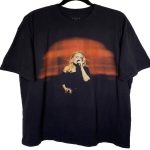Lookism, a term coined in the 1970s, refers to prejudice or discrimination based on physical appearance. In our society, where beauty is often linked with success and happiness, lookism has become a pervasive issue. It is deeply entrenched in various aspects of our lives, from personal relationships to job opportunities. Among several factors contributing to this phenomenon, merchandising plays a significant role.
Merchandising – the practice of promoting goods for sale – significantly impacts beauty standards by determining what we perceive as attractive or unattractive. Through advertisements and product placements, companies sell not just products but ideals of beauty that are often unrealistic and unattainable for most people. They create an illusion that using their products can help consumers attain these standards.
The cosmetics industry is a prime example of how merchandising shapes our perception of beauty. Advertisements feature models with flawless skin and perfect bodies selling anti-aging creams or weight loss supplements. These images create an unrealistic standard of perfection that consumers strive to achieve, leading them into an endless cycle of consumption.
Fashion industry also contributes significantly towards perpetuating lookism Merch through its merchandising strategies. The use of thin models in fashion campaigns creates an unhealthy norm around body size and shape which leads many individuals striving for this impossible standard while neglecting their health.
Merchandising doesn’t only affect adults; it starts impacting individuals at a young age when they are most vulnerable to societal pressures. Children’s toys like dolls often portray unrealistic body proportions which can lead children to develop distorted perceptions about their own bodies as they grow up.
However, change is slowly taking place as more companies are becoming aware of the harmful effects of traditional merchandising practices on beauty standards and self-esteem levels among consumers. Some brands have started featuring diverse models representing different sizes, ages, races etc., challenging conventional notions about attractiveness.
Moreover, there’s been growth in businesses focusing on selling products promoting self-care and wellness over physical appearance. They encourage consumers to embrace their natural beauty, breaking the chains of lookism.
In conclusion, while merchandising has played a significant role in promoting unrealistic beauty standards and propagating lookism, we are witnessing a shift towards more inclusive practices. It’s crucial for companies to continue this trend and for consumers to support brands that promote diversity and body positivity. Breaking the chains of lookism is not an overnight process; it requires collective effort from both businesses and individuals alike. By doing so, we can create a society where everyone feels valued for who they are rather than how they look.











